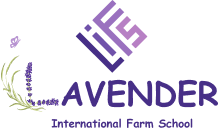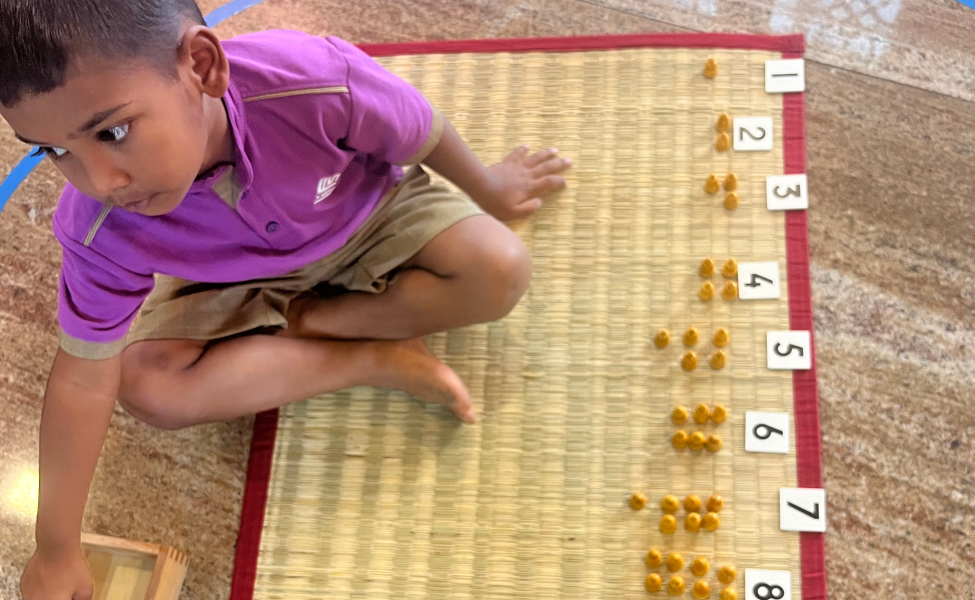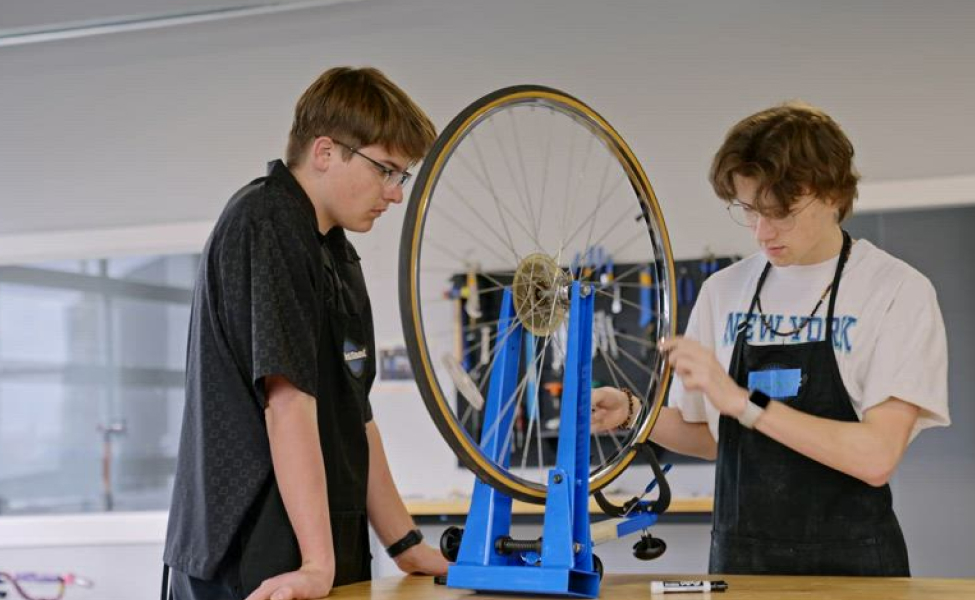In this blog, we’ll explore the process of transitioning to Montessori preschool from toddlerhood, what makes Montessori preschools unique, and how parents can support their children during this important shift.
1. Understanding the Montessori Philosophy for Preschoolers
Before diving into the transition process, it’s essential to understand what sets Montessori preschools apart. Montessori education is based on the principles of self-directed learning, respect for the child’s individual pace, and fostering independence. The preschool environment is designed to cater to a child’s natural curiosity, offering hands-on activities that allow children to explore and learn at their own pace.
Unlike traditional preschools that often focus on structured lessons and teacher-led instruction, Montessori preschools prioritize learning through exploration. Children are encouraged to follow their interests, whether it’s working on a puzzle, engaging in sensory activities, or learning to pour water independently. This philosophy nurtures a child’s confidence and ability to think independently from a young age.
2. The Toddler to Preschool Transition: What to Expect
The transition from toddlerhood to preschool typically occurs between the ages of 2.5 to 3 years old. This shift can be significant as toddlers move from a more protected, caregiver-led environment to a setting where they are encouraged to be more independent. While this change may feel daunting for some children (and parents), Montessori preschools are carefully designed to support a gentle transition.
Montessori classrooms are multi-age environments, typically including children from ages 3 to 6. This structure allows younger children to learn by observing older peers and provides them with role models as they grow. The presence of familiar routines, child-sized furniture, and hands-on materials ensures that children feel safe and engaged as they adjust to their new surroundings.
Here are some of the key elements you can expect in a Montessori preschool classroom:
- Child-led activities: Children are free to choose the activities they want to engage with, giving them a sense of control over their learning experience.
- Practical life skills: Activities like pouring, cleaning, and dressing are part of the curriculum, helping children develop fine motor skills and independence.
- Multi-age classrooms: Older children often help younger ones, fostering a sense of community and cooperation.
- Prepared environment: Classrooms are designed to promote exploration, with materials that are carefully selected to suit each child’s developmental stage.
3. Fostering Independence in the Montessori Preschool
One of the hallmarks of Montessori education is the emphasis on independence, even in preschool. As your toddler transitions into preschool, they’ll be encouraged to do things on their own—whether it’s putting on their shoes, setting the table, or choosing an activity to work on. Montessori teachers serve as guides rather than instructors, allowing children to learn by doing.
Parents can help foster this independence at home by giving their children age-appropriate tasks and responsibilities. Simple activities like allowing your child to dress themselves or clean up after playtime can build their self-confidence and prepare them for the Montessori preschool environment.
4. The Role of the Prepared Environment in Supporting the Transition
A key concept in Montessori education is the “prepared environment.” In Montessori preschools, the classroom is carefully arranged to promote self-directed learning, independence, and a sense of order. Child-sized furniture, easy-to-reach materials, and designated spaces for different activities all contribute to this prepared environment, allowing children to explore freely and work independently.
The prepared environment is designed to meet the developmental needs of preschoolers by offering:
- Freedom within limits: While children have the freedom to choose activities, they also learn to respect boundaries and routines within the classroom.
- Hands-on materials: Montessori materials are designed to be self-correcting, allowing children to learn through trial and error without constant adult intervention.
- Sensory learning: Many Montessori activities engage a child’s senses, which is especially important at the preschool age when children are learning through exploration and tactile experiences.
At home, parents can create a similar environment by organizing toys and learning materials in a way that allows children to access them independently. Having a designated space for activities, with items within your child’s reach, can make the transition to Montessori preschool smoother.
5. Supporting Emotional Development During the Transition
Transitioning from toddlerhood to preschool is not only about academic growth—it’s also an important time for emotional and social development. In Montessori preschools, children are given the space to express their emotions, learn how to manage them, and develop social skills through interaction with peers.
Parents can support their child’s emotional development by discussing the upcoming transition in positive terms. Preparing your child for the change by visiting the classroom, meeting the teacher, and talking about what to expect can help reduce any anxiety they might feel. Additionally, encouraging your child to express their feelings and reassuring them that it’s okay to feel nervous can make the process less overwhelming.
Social interactions in the Montessori classroom also help children develop key skills such as sharing, taking turns, and resolving conflicts. The multi-age environment fosters a sense of community where children learn from one another, creating a supportive space for emotional growth.
6. Tips for a Smooth Transition to Montessori Preschool
Here are a few practical tips to help make the transition to Montessori preschool easier for both you and your child:
- Establish routines: Montessori classrooms follow consistent routines, which help children feel secure. Start practicing a predictable daily routine at home, including set times for waking up, meals, and bedtime.
- Visit the school together: Familiarize your child with their new environment by visiting the school before the transition. This will help them feel more comfortable when the time comes to attend.
- Encourage independence at home: Give your child opportunities to practice self-care skills like dressing themselves, tidying up their toys, and helping with simple tasks. These activities will boost their confidence and prepare them for preschool.
- Talk about the transition: Discuss the upcoming changes with your child in a positive light. Highlight the exciting aspects of preschool, such as making new friends and engaging in fun activities.
- Create a Montessori-inspired space at home: Set up a small area at home with accessible toys, books, and materials. This will help your child get used to the Montessori approach of learning through exploration.
Conclusion: A Smooth Transition to a Lifelong Love of Learning
The transition from toddlerhood to Montessori preschool marks the beginning of an exciting new chapter in your child’s educational journey. With its emphasis on independence, hands-on learning, and emotional development, Montessori preschools provide a nurturing environment that supports the whole child. By understanding the unique approach of Montessori education and preparing your child at home, you can ensure a smooth and positive transition that sets the stage for a lifelong love of learning.
As your child steps into this new environment, they will not only grow academically but also emotionally and socially, gaining the skills they need to navigate the world with confidence and curiosity.



